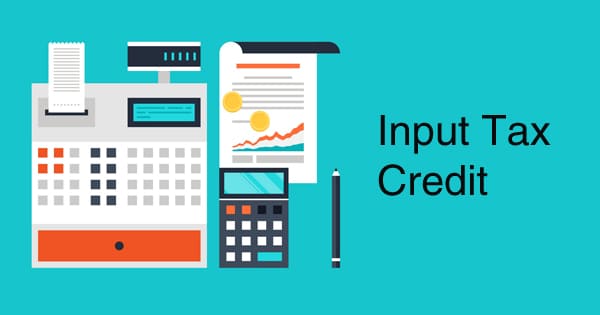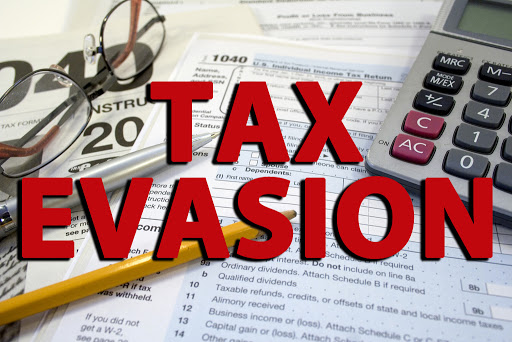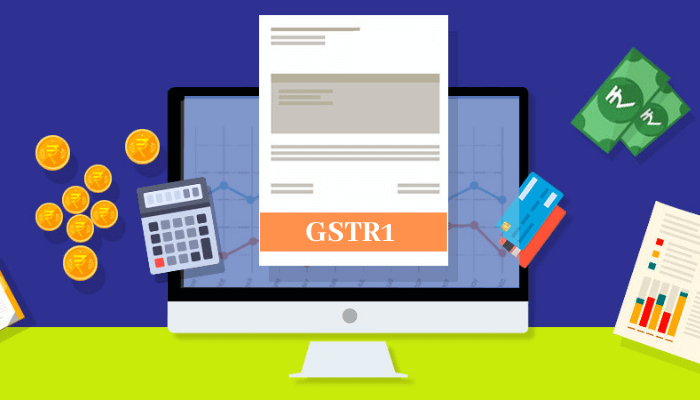Amendment was made in the CGST Rules, 2017 vide notification no. 94/2020-Central Tax Dated 22-12-2020 (CGST (Fourteenth Amendment) Rules, 2020.) Amongst the various changes made vide above Notification was insertion of new Rule 86B (Restriction on use of Input Tax Credit for discharging the output liability). It may be noted that as per Notification said Rule will be effective from 1st January 2021.
Text of new Rule 86B:
86B. Restrictions on use of amount available in electronic credit ledger.-
Notwithstanding anything contained in these rules, the registered person shall not use the amount available in electronic credit ledger to discharge his liability towards output tax in excess of ninety-nine per cent. of such tax liability, in cases where the value of taxable supply other than exempt supply and zero-rated supply, in a month exceeds fifty lakh rupees:
Provided that the said restriction shall not apply where –
(a) the said person or the proprietor or karta or the managing director or any of its two partners
whole-time Directors, Members of Managing Committee of Associations or Board of Trustees, as
the case may be, have paid more than one lakh rupees as income tax under the Income-tax Act,
1961(43 of 1961) in each of the last two financial years for which the time limit to file return of
income under subsection (1) of section 139 of the said Act has expired; or
(b) the registered person has received a refund amount of more than one lakh rupees in the preceding financial year on account of unutilised input tax credit under clause (i) of first proviso of subsection (3) of section 54; or
(c) the registered person has received a refund amount of more than one lakh rupees in the preceding financial year on account of unutilised input tax credit under clause (ii) of first proviso of subsection (3) of section 54; or
(d) the registered person has discharged his liability towards output tax through the electronic cash
ledger for an amount which is in excess of 1% of the total output tax liability, applied cumulatively, upto the said month in the current financial year; or
(e) the registered person is –
(i) Government Department; or
(ii) a Public Sector Undertaking; or
(iii) a local authority;or
(iv) a statutory body:
Provided further that the Commissioner or an officer authorised by him in this behalf may remove the said restriction after such verifications and such safeguards as he may deem fit.
1. What Rule 86B mandates
The Rule 86B mandates restriction in utilization of ITC while discharging output tax liability. The restriction imposed is 99% of the output tax liability and therefore cash payment of 1% of the output tax liability will be required to be made by a tax payer on a monthly basis, who are covered by this rule. It is important to note here that the 1% cash payment of liability is required irrespective of the fact that balance may be available in the electronic credit ledger.
2. Is Rule 86B applicable on reverse charge payments
As we all know input tax credit credit cannot be availed against the payment of GST under reverse charge mechanism and the same is to be paid entirely through electronic cash ledger. Therefore Rule 86B is not applicable on reverse charge payments. The Rule also clearly states that the restriction applies while discharging out tax liability and reverse charge being payment of tax on inward supplies is out of ambit of Rule 86B.
3. Taxpayers to whom Rule 86B is applicable
Only registered persons who have taxable supplies of more than Rs. 50 lakhs in a particular month (subject to certain exceptions) must comply with this provision. The Rule clearly mandates that the exempt supply and zero-rated supply (exports and supplies to SEZ) will not be including while arriving checking with this limit of Rs 50 lakhs. The reason for excluding these is no payment of GST outward liability is required on such supplies.
Further monthly limit of taxable supplies of Rs 50 lakhs has been fixed and thus the taxpayer has to check while filing its GSTR-3B whether his taxable supplies for that month exceeds this limit or not. If exceeds the Rule 86B will be invoked else not. It may be noted no annual limit of turnover in this regard has been fixed.
Example: If in any month, taxable supplies are of Rs. 40 lakhs, exports are of Rs. 20 lakhs and exempt supplies are of Rs. 10 lakhs, Rule 86B will not be attracted for such month as taxable supplies are not more than Rs 50 lakhs (exports and exempt supplies not to be included).
4. Is Rule 86B also applicable on zero rated supply
We have discussed in the preceding para that for calculation of the monthly threshold limit of Rs 50 lakhs , the value of taxable supplies excluding the zero-rated supplies and exempt supplies needs to be considered. However, in case the taxable supply exceeds Rs 50 lakhs and the taxpayer also has zero rated supply where taxpayer has opted for making payment of tax , a question may arise as to whether Rule 86B for making payment of 1% will be applicable on zero rated supply also or not.
In this regard Rule 86B mandates for payment of 1% of the total output tax needs in cash and doesn’t exclude zero rated supply from the ambit of output tax. Therefore, where zero rated supplies are with payment of tax, 1% cash payment will still be required on output tax including that on zero rated supplies.
Example: If in any month, taxable supplies are of Rs. 60 lakhs and zero rated supplies with payment of tax is Rs. 40 lakhs, assuming the rate of GST of 18%, mandatory amount of 1%*100 lakhs*18% = Rs. 18000 must be paid in cash even if ITC is available.
5. Taxpayers exempted from application of Rule 86B
The following persons are not required to comply with the restrictions:
a) The registered person or the Proprietor or the Karta or the Managing Director or any of its two partners, whole-time directors or members of Managing Committee of Association or Board of Trustees should have paid more than Rs. One lakh as income tax. This amount should have been paid in each of the two preceding financial years for which the time limit to file return of income under subsection section 139(1) of the said Act has expired.
b) the registered person has received a refund of more than Rs. One lakh in the preceding financial year under zero rated supplies (i.e. exports and supplies to SEZ)
c) The registered person has received a refund of more than Rs. One lakh in the preceding financial year under inverted duty structure
d) The registered person has discharged his liability towards output tax through electronic cash ledger in excess of 1% of total output tax liability applied cumulatively upto the said month in the current financial year
e) The registered person is –
i) Government Department or
ii) Public Sector Undertaking or
iii) Local authority or
iv) Statutory body
6. Which financial years relevant for seeing income tax payment for Rule 86B relaxation:
We know the due date of filing Income Tax return for the Assessment year 2020-21 has been extended for persons liable for tax audit / companies’ audit / partners of firms liable for audit etc. to 15th February 2021. Most of the taxpayers falling under Rule 86B would be having tax audit applicable to them. As the due date of filing ITR for AY 2020-21 will be over by 15th February, 2021 i.e. before filing of GSTR-3B for January, 2021 which is due of 20th / 22nd / 24th February, 2021 therefore for compliance for the month of January 2021 onwards , the two preceding financial years for calculating the limit of Rs. One lakh would be the Assessment year 2020-21 and 2019-20.
7. Relaxation regarding refund of GST
It is important to note here that the limit of Rs. One lakh of refund for purpose of exemption to Rule 86B will be calculated for inverted duty structure and zero rated supplies separately. Thus, we can say that the refunds for the exports and supplies to SEZ developer or unit (both being zero rated supplies) will be clubbed to determine Rs. One lakh but the refund towards inverted duty structure would be kept separate and limit of Rs One lakh is to be seen in isolation.
Example: If refund received for inverted duty structure is Rs. 60,000 and for exports is Rs. 50,000 in a year, the exemption will not be applicable and Rule 86B will apply, if other applicable. However, in case the refund for supplies to SEZ is Rs. 60,000 and for exports is Rs. 50,000, both being zero rated supply the limit of Rs 1,00,000/- would be achieved and Rule 86B would not be required to be complied with.
It is also important to note here that the limit of Rs one lakh is for refund received during the preceding financial year irrespective of the period for which the refund had been claimed.
8. Cumulative calculation for purpose of exemption from Rule 86B
The registered person who has discharged his liability towards output tax through electronic cash ledger in excess of 1% of total output tax liability applied cumulatively upto the said month in the current financial year is exempted from Rule 86B.
Accordingly while filing GSTR-3B for the month of January, 2021 we need to add up the total output tax liability (reverse charge not included) in GSTR-3B for the months April, 2020 to December, 2020. Then we need to add up the amount of tax paid through electronic cash ledger during these months. In case the cumulative payment in cash exceeds 1% of the total output liability, Rule 86B will not apply while filing GSTR-3B for January, 2021.
This cumulative % need to be computed while filing of GSTR-3B for each month.
9. Commissioner has power to relax application of Rule 86B
The Commissioner or any officer authorized by him have been given the power to remove the restrictions after such verification and safeguards as he may deem fit. This means that the genuine taxpayers who facing the brunt of this rule have an option of making an application before the Department. After observing the safeguards, it can exempt the relevant taxpayers from the Rule 86B.
10. Consequences of non-compliance of Rule 86B
There are multiple implications that are triggered upon non-compliance with Rule 86B of the CGST Rules 2017:
a) Filing of GSTR-1 can be debarred: Rule 59 of the CGST Rules 2017 prescribes the provisions for furnishing details of outward supplies in GSTR-1. As per this rule, if a taxpayer who is required to pay tax at the rate of 1% of the output tax liability in cash and fails to furnish his GSTR-3B in any particular month, he will not be allowed to upload his GSTR-1 of the subsequent tax period.
Accordingly if a registered person does not file his GSTR-3B of January 2021 and he was liable to pay tax at the rate of 1% of output tax in cash, he will not be allowed to furnish GSTR-1 of February 2021.
b) Cancellation of Registration: Rule 21 of the CGST Rules 2017 which provides for cancellation of registration has been modified to include the reference to violation of Rule 86B of the CGST Rules 2017. This means that the registration of a person can be cancelled if fails to comply with the mandatory deposit of 1% of the output tax liability in cash wherever applicable.
c) Scrutiny of returns: Scrutiny of returns can be carried out by the proper officer to verify the correctness of the return as per Section 61 of the CGST Act 2017. Thereafter, the discrepancies are communicated to the taxpayer for seeking explanation.
Non-payment of mandatory 1% cash element can attract the Department’s attention through this section. If after this process the Department does not find the explanation of the registered person to be satisfactory, they may proceed for Department Audit under Section 65 or Special Audit under Section 66 or the operations of inspection, search and seizure under Section 67. They may also issue show cause notice for determination of tax dues under Section 73 or 74 as discussed in succeeding para.
d) Demand proceedings u/s 73 or 74: Non-compliance with the mandatory requirement of payment of 1% tax liability in cash for the applicable cases amounts to incorrect utilization of input tax credit. As per Section 73 or 74, where there is wrong utilization of input tax credit, the Department can proceed to determine such amount and require its payment along with interest and penalty.
However it may be said that in such a situation, there was no avoidance of any tax liability as eligible ITC available in credit ledger has only been availed. Hence, there is no amount payable to the government. Thereby, there cannot be any question of any tax liability or interest or penalty payable on the contravention of this provision. It appears that in such cases, the Department can levy penalty under Section 125 which is the residuary provision for contravention of any of the provisions of the Act or rules. In this section, the maximum penalty prescribed is Rs. 25,000 under the CGST Act 2017 i.e. total penalty of Rs 50,000/ ( CGST + SGST).
Follow us for free tax updates : facebook Twitter
***
Subscribe our portal and get FREE Tax e-books , quality articles and updates on your e-mail.
Resolve your GST queries from national level experts on GST free of cost.
Frah Saeed is a law graduate specializing in the core field of indirect taxes and is the Co-founder of taxwallah.com. She has authored many publications on GST and is into full-time consultancy on GST to big corporates. She as a part of taxwallah.com heads a team comprising of Chartered Accountants and Advocates and plays a key role in our mission to disseminate GST knowledge to all.



